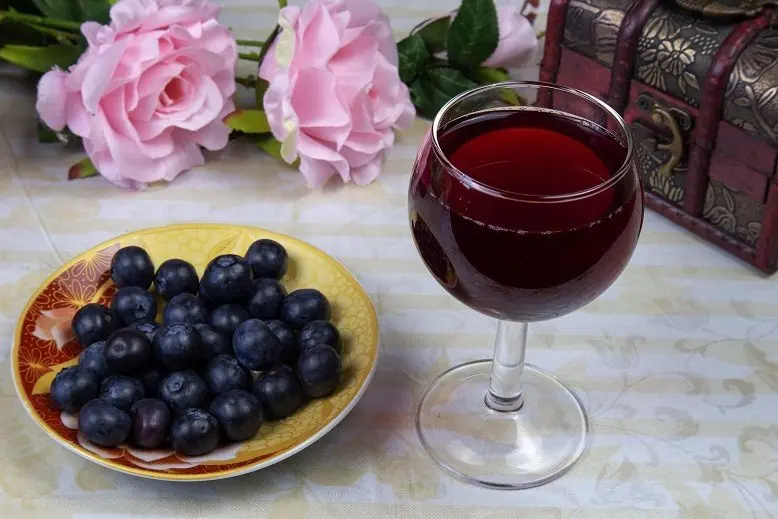Homemade blueberry wine has a beautiful ruby red color, a pleasant smell and a soft balanced taste with hints of grapes. We will consider the correct recipe for cooking at home. The main thing is to strictly follow the technology.
For blueberry wine, you need ripe juicy berries, it is better not to use overripe and sluggish ones, because they will make the drink cloudy. First, blueberries are carefully sorted out, removing spoiled, rotten and moldy fruits. Even one such berry can spoil the entire batch of wine. The containers are sterilized with boiling water and wiped dry to prevent contamination of the wort by third-party microorganisms.
Ingredients:
- blueberries – 5 kg;
- water – 5 liters;
- sugar – 2 kg;
- unwashed raisins – 100 grams;
- citric acid – 20 gram.
Raisins are needed for reinsurance as a source of wild yeast, if there are few of them on the blueberries themselves, for example, they are washed away by rain. Citric acid stabilizes the acidity of the wort to support normal fermentation and subsequent storage.
blueberry wine recipe
1. Mash unwashed berries with your hands or a wooden rolling pin. Put the resulting mass into a container with a wide neck.
2. Add water, raisins, citric acid and 0.5 kg of sugar. Stir, cover the neck with gauze so that insects do not get into the wort. Leave the container in a dark room with a temperature of 18-25°C. Stir once a day with a wooden stick or a clean hand.
3. After 2-3 days, signs of fermentation will appear: hissing, foam near the surface and a slight sour smell, part of the pulp (pomace) will float to the top. Pour the juice through 3-4 layers of gauze into a fermentation container (at least a quarter of the volume should remain free), squeeze the pulp dry. The pomace can be thrown away.
4. Add 0.5 kg of sugar to the fermented juice, mix. Install a water seal or a medical glove on the neck (pre-make a hole with a needle in one of the fingers). Check the tightness of the structure. Transfer the must to a dark place with a temperature of 18-25°C.

5. After 4 days, remove the water seal (glove). Drain 200-300 ml of wort from the container, dilute 0.5 kg of sugar in it. Pour the resulting syrup back, install the water seal in place. After 3 days, repeat the procedure, adding the remaining portion of sugar (0.5 kg).
6. Fermentation lasts 30-60 days, then the water seal stops emitting gas (the glove deflates), a layer of sediment appears at the bottom, the must becomes lighter. Drain the young blueberry wine into another clean container through a tube, for example, from a dropper, without touching the sediment at the bottom.
If fermentation continues after 55 days from the date of installation of the water seal, so that bitterness does not appear, you need to drain the wine from the sediment, then put it under a water seal at the same temperature.
7. Taste the wine, if desired, add sugar to taste. You can also add vodka or alcohol (2-15% by volume) to increase the strength. Fortified wine keeps better, but some of the flavor is lost.
8. It is advisable to fill the storage container to the top so that there is no contact with air, close the container hermetically or put it under a water seal again if you doubt that the fermentation is over.
9. Transfer the wine to a dark, cool place with a temperature of 5-16°C (cellar or refrigerator). Leave for 3-9 months to age (the more the better).
10. Once every 20-30 days, remove the wine from the sediment by pouring it through a tube into another container. During this stage, it is important not to touch the sediment at the bottom. The wine is considered ready when the sediment no longer appears.
11. After aging, pour homemade blueberry wine into bottles for storage, seal tightly with corks. The output is 5-6 liters of finished wine with a strength of 9-12%. When maintaining the recommended temperature, the shelf life is 3-4 years.










